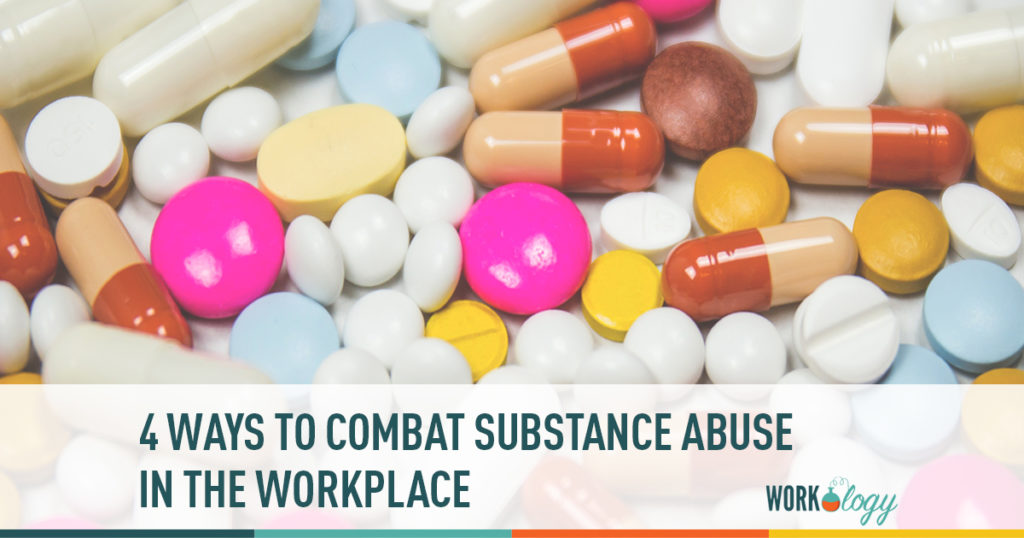This piece by Kate Rodriguez was originally published on The Economist’s Executive Education blog here.
U.S. workplaces may be safer than they’ve ever been, but creating policies that support accident-free organisations has become more complicated. This thanks to substance abuse, which is on the rise among adults over 18, according to government estimates.
David Schein, an attorney specialising in employment law, and an associate professor at the Cameron School of Business at the University of St. Thomas in Houston, explains that “the combination of the mixed message of legalised marijuana and the opioid epidemic means employers need to be as careful today they’ve had to be at any other time.”
4 Ways to Combat Substance Abuse at Work
In a recent survey of U.S. employers, over 70 percent of them said they are somehow impacted by prescription drug misuse, yet only 19 percent of employers say they’re completely ready to deal with the fallout from such abuse on the job.
More than half of U.S. states have legalised marijuana in some form, and as use grows, so have problems with workers testing positive for the drug. On top of this, addiction to prescription opioid-based painkillers is at an all-time high.
Most drug-free workplace policies do not segregate legal from illegal drugs, comments Schein. However, they typically require workers impaired or involved in an accident to submit to a drug test. In the case of prescription painkillers, if a worker tests positive for an opioid derivative, he or she must present a prescription for the medicine. But that does not mean the person is safe to work. “The problem is the person can be just as impaired on prescribed painkillers like Vicodin as on illegal drugs like heroin,” he adds.
Regarding marijuana, Schein says, it’s moving into the same category as alcohol in states where it is now legal: even though employees might legally be allowed to use it, if it interferes with their performance at work, they can be subject to disciplinary action.
So, just how do companies create safer workplaces free of substance abuse amidst this complex scene? Schein offers four ways:
Lead drug-free workplaces from the top down
Schein discourages company leaders from delegating oversight of a substance-free workplace to the HR function. “The boss needs to stand up and say ‘we take being safe at work seriously and we want to make sure people are sober at work,’” he stresses. This starts, of course, with ensuring the organisation has a comprehensive drug-free workplace policy.
Part of that includes a system of random drug tests for all employees – including C-suite executives — which Schein encourages as a deterrent. “I tell leaders and company owners they should take part in random drug tests, too, if they want the programme to have a good impact.”
Finally, organisational heads should lead periodic safety meetings, educating staff about the company’s drug-free workplace policy and reminding managers and employees that working under the influence is an offense that can lead to termination.
Follow a two-strikes policy
In the 80s and 90s, most companies followed a “zero tolerance” policy, according to Schein, meaning that an employee was fired after a negative drug test. That has since mellowed to a “two strikes and you’re out” approach that he considers better, especially for long-time, valuable employees who may experience short-term setbacks that lead them to abuse drugs. “Zero tolerance may be necessary in some high-risk industries, like emergency response, air transport or oil rigs. But far more effective is a blended approach.”
What this means is that employees with an otherwise good safety record who test negative for substances are provided the opportunity to seek treatment and return to work. They are then subjected to random drug tests for a period of time.
Give employees incentives to come forward if they have a problem
Schein claims that it’s often coworkers reporting a colleague’s odd behaviour that alerts management to a substance abuse problem. A far better scenario, however, is when employees themselves admit to an addiction and seek help.
Drug-free workplace policies should includes a self-identification clause stipulating that when an employee comes forward, he or she be granted a leave of absence and assistance in finding an addiction treatment programme. Companies need to send the message that “if you self-identify, you will not be retaliated against,” he claims.
Foster a health-conscious environment
“A real orientation to a healthy workplace has implicit in it a drug-free workplace,” Schein believes. Companies can promote a health mindset by providing gym memberships and sponsoring smoking-cessation programmes, for instance. Moreover, he says, they should pay attention to how they organise parties involving alcohol, considering holding them offsite, for example, and limiting the number of drinks.
On a positive note, employers seem to be willing to help their workers who are afflicted with addictions. The survey that showed the high number of businesses impacted by drug abuse also shows that most employers are willing to let staff keep their jobs after they have undergone treatment for substance abuse. Only 20 percent said they would fire an employee who’s abusing or misusing drugs.









One Comment
Substance abuse is one of the most common problems of company nowadays. I’m glad that there are articles like this that could really help solve the problem. We can also prevent it by hiring applicants that does not have a history of substance abuse. Here’s a reliable background check company https://www.intelifi.com/technology/emerge
Comments are closed.